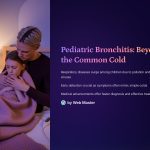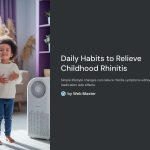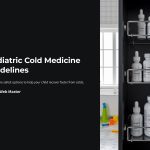 With childhood rhinitis becoming increasingly prevalent, many parents are searching for safe and natural solutions to manage symptoms without relying solely on medications. From seasonal allergies to chronic nasal congestion, the quality of daily life can be heavily impacted when a child struggles to breathe comfortably. Fortunately, small yet consistent lifestyle adjustments can play a powerful role in preventing flare-ups, easing inflammation, and improving overall respiratory health. As awareness grows, pediatricians and wellness experts recommend a proactive approach—one that centers on optimizing the home environment, improving sleep quality, and enhancing the body’s natural defenses. In this comprehensive guide, we reveal six scientifically backed daily habits that can significantly reduce your child’s rhinitis symptoms and create a healthier, more comfortable everyday routine.
With childhood rhinitis becoming increasingly prevalent, many parents are searching for safe and natural solutions to manage symptoms without relying solely on medications. From seasonal allergies to chronic nasal congestion, the quality of daily life can be heavily impacted when a child struggles to breathe comfortably. Fortunately, small yet consistent lifestyle adjustments can play a powerful role in preventing flare-ups, easing inflammation, and improving overall respiratory health. As awareness grows, pediatricians and wellness experts recommend a proactive approach—one that centers on optimizing the home environment, improving sleep quality, and enhancing the body’s natural defenses. In this comprehensive guide, we reveal six scientifically backed daily habits that can significantly reduce your child’s rhinitis symptoms and create a healthier, more comfortable everyday routine.

Maintain Optimal Indoor Air Quality
Indoor air is a major factor in triggering or relieving rhinitis symptoms. Children spend over 90% of their time indoors, making it essential to minimize exposure to dust mites, mold, pet dander, and pollen particles that enter through open windows. Investing in a HEPA-filter air purifier can dramatically reduce airborne allergens. Additionally, maintaining a consistent humidity level between 40–50% with a humidifier can soothe dry nasal passages, especially during winter months when heating systems exacerbate dryness.
Regular vacuuming with a HEPA filter vacuum cleaner, using allergen-proof mattress and pillow covers, and washing bedding weekly in hot water can also eliminate major irritants. Avoiding synthetic air fresheners and cleaning products with harsh chemicals helps prevent respiratory irritation. Remember, a clean, well-ventilated home forms the first line of defense in protecting your child’s respiratory health.

Establish a Nasal Hygiene Routine
Just like brushing teeth, nasal hygiene should be part of a child’s daily routine—especially during allergy seasons. Saline nasal sprays or rinses (with a pediatric neti pot or spray bottle) help clear out allergens, dust, and mucus from the nasal passages. This simple habit reduces inflammation and supports natural breathing.
Teaching children to gently blow their noses several times a day—especially after outdoor play or before bed—can also significantly lessen congestion. Make sure to consult your pediatrician on the best saline product for your child’s age, and always supervise nasal rinses for younger kids. Over time, this practice helps build a cleaner nasal environment and reduces the need for medication.

Choose Hypoallergenic Bedding and Sleepwear
Nighttime is when allergic symptoms often worsen due to prolonged exposure to allergens in pillows, blankets, and pajamas. Opt for hypoallergenic, breathable, and washable materials. Organic cotton or bamboo fabrics are excellent choices as they’re gentle on sensitive skin and less likely to trap allergens.
Pillows should be replaced every 1–2 years to avoid dust mite buildup, and blankets should be washed weekly in hot water. Consider replacing thick, plush comforters with lighter, allergen-reducing alternatives. Also, encourage your child to shower and change clothes before bed to remove pollen and outdoor particles.

Incorporate Anti-Inflammatory Foods into Meals
Diet plays a vital role in managing inflammation, including that which affects the nasal passages. Foods rich in omega-3 fatty acids—like salmon, walnuts, and flaxseeds—are known to support the immune system and reduce allergic responses. Fresh fruits like apples and berries, which contain natural antihistamines and antioxidants, are also beneficial.
Dairy, processed foods, and sugary snacks can sometimes exacerbate mucus production and should be consumed in moderation. Drinking warm fluids like herbal teas or chicken broth can also soothe throat irritation and help clear nasal blockages.

Keep Pets and Pollens at Bay
While pets are beloved members of the family, their dander is a common allergen. Create pet-free zones—especially in bedrooms—and regularly bathe and brush pets outdoors. If possible, use high-efficiency filters in HVAC systems to capture pet-related particles.
Additionally, during high pollen seasons, keep windows closed, use dryer machines instead of air-drying clothes outdoors, and wipe your child’s hands and face after playing outside. This small yet impactful practice can drastically reduce the allergen load your child encounters daily.

Foster Restful, Allergy-Free Sleep
Good sleep strengthens the immune system and helps reduce inflammatory responses. Allergic symptoms like nasal congestion can lead to mouth breathing and restless sleep, affecting a child’s focus and energy the next day. Elevating the head slightly with an extra pillow may aid drainage and open airways.
Use blackout curtains and maintain a cool, allergen-free sleeping space. Avoid sleeping with stuffed animals unless they are washed weekly. Encourage a consistent bedtime routine and limit screen time before sleep to reduce cortisol levels and promote melatonin production.
FAQ: Additional Questions Parents Ask
Q: Can children outgrow rhinitis?
A: Yes, some children may experience reduced symptoms as their immune systems mature. However, proper management early on helps prevent complications like sinus infections or asthma.
Q: Are antihistamines safe for long-term use?
A: While many are safe under a doctor’s supervision, it’s best to combine them with lifestyle changes for sustainable relief.
Q: What role does hydration play in rhinitis relief?
A: Staying well-hydrated helps thin mucus and supports better sinus drainage.
*Capturing unauthorized images is prohibited*





